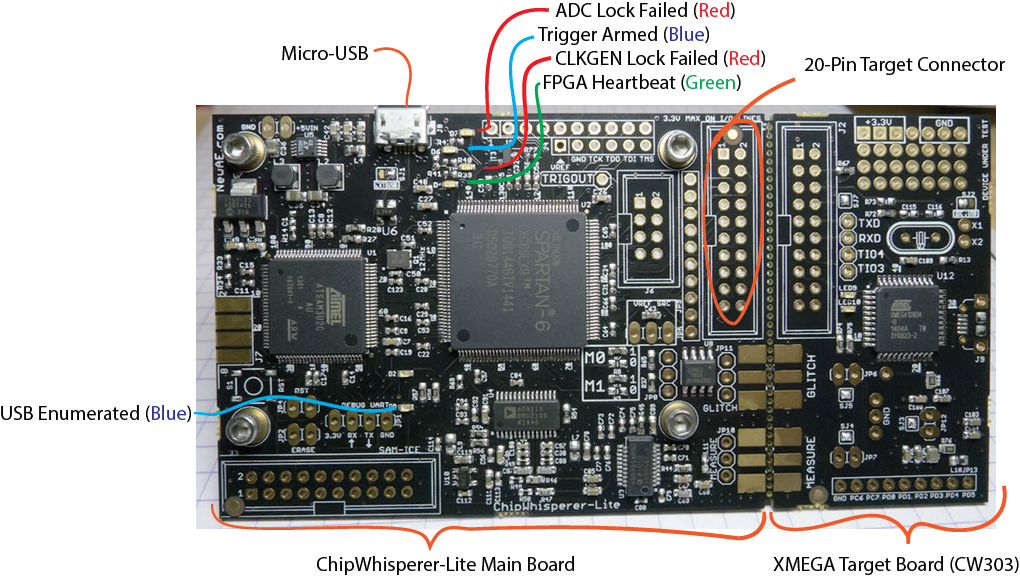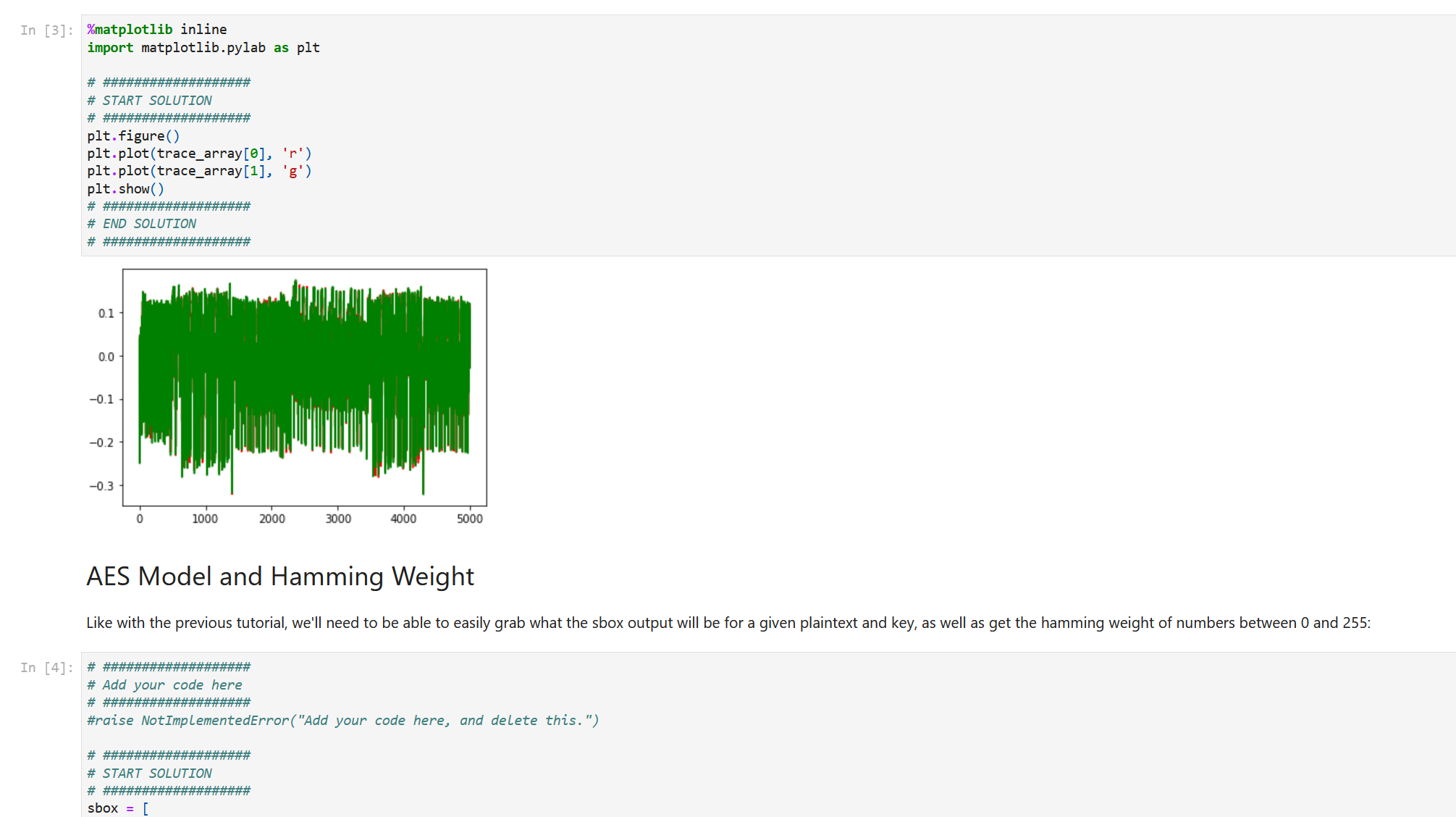Overview¶
New to ChipWhisperer? No problem!
This page will give a brief overview of what ChipWhisperer is, where you can find documentation about different parts of the ChipWhisperer toolchain, as well as some of the major changes that have recently happened to ChipWhisperer.
Consider this page the answer to “Help, I’m confused… there are too many websites that have resources related to ChipWhisperer”.
What is ChipWhisperer?¶
ChipWhisperer is a complete open source toolchain for learning about side channel attacks on embedded devices and validating the side channel resistance of these devices. In particular, ChipWhisperer focuses on power analysis, which uses information leaked by a device’s power consumption to mount an attack, as well as voltage and clock glitching attacks, which briefly disrupt a device’s power or clock to cause unintended behaviour (such as skipping a password check).
Components¶
In total, ChipWhisperer has four layers of open source components:
Hardware¶
ChipWhisperer has scope boards, which are used to mount side channel attacks, as well as target boards, which function as a device under test (DuT). Hardware documentation can be found at https://rtfm.newae.com
Hardware is for the most part open source and design files/schematics can be found either on the ChipWhisperer Github repository, or on a UFO target board repository.

Firmware¶
ChipWhisperer also includes open source firmware for both scopes and targets.
Scope firmware is written in Verilog (for
the FPGA) and C (USB microcontroller) and can be found in the
hardware/capture sections of the ChipWhisperer
Github repository.
Target firmware is mostly written in C (though we do have
a few FPGA targets with code in Verilog) and can be found
in the hardware/victims/firmware directory of
the ChipWhisperer Github repository.
Software¶
ChipWhisperer has an open source Python library for controlling the capture hardware and communicating with the target. ChipWhisperer ReadTheDocs (this website) has the API documentation and installation instructions for this part of the ChipWhisperer toolchain.
The source code for the API is located on the ChipWhisperer Github repository.
Tutorials¶
Finally, ChipWhisperer also includes Jupyter Notebook tutorials and labs that both teach about side channel attacks that can be performed with ChipWhisperer, as well as showcase how to use the Python API. These tutorials/labs are available in the ChipWhisperer Jupyter Github repository.
Important Links¶
The issue tracker for the GitHub repository. If you have any issues with the ChipWhisperer software that you suspect may be bugs, let us know there. Also, if you have any suggestions for future improvements this is also place to suggest them. All ideas/suggestions, and issues are welcome. Enhancements will be considered, and discussed there before the decision is made.
The forum for all things related to side-channel analysis. If you are stuck and need help, you may find some much needed help here. Whether about ChipWhisperer hardware or with other projects related to side-channel analysis, all discussion is welcome. One of us at NewAE Technology usually monitors the forum and there is a good chance we can help you. There are also other active members that are also on the forum which may have run into the same problems you have. Before posting please take a look at other forum posts. You may find your answer quicker than you think.
NewAE offers paid online courses that go in depth into things not covered by the free tutorials, such as different power measurement techniques, as well as how to setup non ChipWhisperer hardware for side channel attacks.
The is the website for NewAE Technolgy Inc. the maintainers of the ChipWhisperer software and the creators the of the ChipWhisperer platform. Here you can find out about the company, and find links to things like the store, and upcoming training sessions. Here you can you also find some other the other products NewAE Technology Inc. sells like the electromagnetic fault injection platform, the ChipSHOUTER.
Here you can get yours hands on one of those hardware boards used by all of the tutorials. NewAE Technology sells hardware to take away the frustration of setting up the hardware for side-channel attacks. These boards are available at the NewAE Store. Boards are also available on Mouser.


